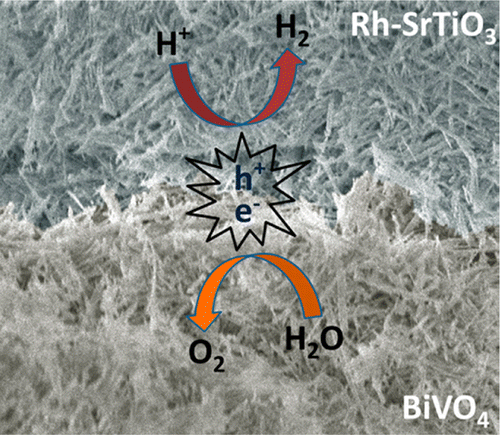Toward a low-cost 'artificial leaf' that produces clean hydrogen fuel

For years, scientists have been pursuing "artificial leaf" technology, a green approach to making hydrogen fuel that copies plants' ability to convert sunlight into a form of energy they can use. Now, one team reports progress toward a stand-alone system that lends itself to large-scale, low-cost production. They describe their nanowire mesh design in the journal ACS Nano.
Peidong Yang, Bin Liu and colleagues note that harnessing sunlight to split water and harvest hydrogen is one of the most intriguing ways to achieve clean energy. Automakers have started introducing hydrogen fuel cell vehicles, which only emit water when driven. But making hydrogen, which mostly comes from natural gas, requires electricity from conventional carbon dioxide-emitting power plants.
Producing hydrogen at low cost from water using the clean energy from the sun would make this form of energy, which could also power homes and businesses, far more environmentally friendly. Building on a decade of work in this area, Yang's team has taken one more step toward this goal.
The researchers took a page from the paper industry, using one of its processes to make a flat mesh out of light-absorbing semiconductor nanowires that, when immersed in water and exposed to sunlight, produces hydrogen gas. The scientists say that the technique could allow their technology to be scaled up at low cost. Although boosting efficiency remains a challenge, their approach—unlike other artificial leaf systems—is free-standing and doesn't require any additional wires or other external devices that would add to the environmental footprint.
More information: "All Inorganic Semiconductor Nanowire Mesh for Direct Solar Water Splitting" ACS Nano, 2014, 8 (11), pp 11739–11744. DOI: 10.1021/nn5051954
Abstract
The generation of chemical fuels via direct solar-to-fuel conversion from a fully integrated artificial photosynthetic system is an attractive approach for clean and sustainable energy, but so far there has yet to be a system that would have the acceptable efficiency, durability and can be manufactured at a reasonable cost. Here, we show that a semiconductor mesh made from all inorganic nanowires can achieve unassisted solar-driven, overall water-splitting without using any electron mediators. Free-standing nanowire mesh networks could be made in large scales using solution synthesis and vacuum filtration, making this approach attractive for low cost implementation.
Journal information: ACS Nano
Provided by American Chemical Society




















